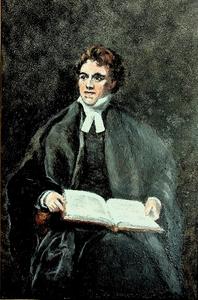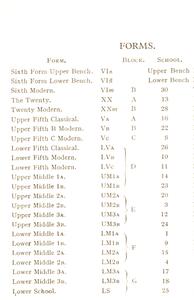Today students study in year groups, usually based on their age. However, this has not always been the case, particularly in the eighteenth and nineteenth century when groups were based on academic ability and classes could range in age. This blog will answer questions on how classes went from being called forms to blocks from the 1790s to today.
When did forms first exist at Rugby School?
Forms were first developed by Head Master Thomas James (pictured above). In the 1790s he split Rugby School into six forms. The form a student was placed in was not based on age but on academic ability. These forms were: First, Second, Third, Fourth, Fifth and Sixth.
When was the LXX and XX introduced?

The LXX and XX were introduced at Rugby School by Head Master Thomas Arnold (pictured above) in the 1830s.
In Arnold’s time these were classes of twenty students who studied at a level between the fifth and sixth form. Today the LXX and XX are the equivalent of other school’s sixth forms or Years 12-13.
What other changes were made to forms in the nineteenth century?
Originally the School was split into the Lower, Middle and Upper School. These Schools were also split into a Classical and Modern Side which would determine what students would study. In 1891 the School introduced a third division, the Army Class. This was for students who wanted to study for Sandhurst and Woolwich examinations. We believe it existed till just after WWI. Another change was the introduction of the minimum age of 13 for Public Schools.
Before Frederick Temple became Head Master students attending Rugby School could be as young as 8. With the development of Education, The Clarendon Commission and decisions made by Temple, Rugby School set a minimum age of 13. While moving through the forms was still based on academic ability those who were under 13 would go to prep school. However, those under 13 living in the Town of Rugby and intending to attend Rugby School as Foundationers and members of Town House needed somewhere to go between the ages of 11 and 13. There was also a need for a Grammer School in Rugby. In 1878 The Governing Body of Rugby School founded Lawrence Sheriff School.
When were the D, E and F Block introduced?
Originally at Rugby School all children in the Lower and Middle School were taught in one large school room. Today this space is known as Old Big School. Members of the Upper School were taught in smaller classrooms in School House. In the 1890s sets were introduced for languages, maths and science. In 1913 the name was changed to Blocks, these blocks were A, B, C, D and E.
In 1929 you can find a block letter alongside the names of forms in the School Lists:

It was not until 1993 that the names of the forms were removed, and each year was given a block name for years 9 to 11. The LXX and XX were not renamed and the XIth Form was removed.
Why was XIth form removed?
Before the 1980s the term XIth form was not used for those studying A Levels as they hadn't been introduced as qualification. XIth form referred to students who stayed an extra six months to a year to take the Oxbridge entrance exams. With the introduction of A levels to entre university at age 18 there wasn't a need for a separate XIth Form and LXX and XX studied A Levels.
What has changed since 1993?
In terms of the names of Blocks and year groups not much has changed. In 2021 Rugby School introduced the IB to its curriculum for the LXX and the XX. Like their counterparts in the nineteenth and early twentieth century this year group once again has two curriculums to choose from.
Conclusions
Since Thomas James introduced forms in the 1790s Rugby School has gone from forms to blocks. It has also seen changes in the way the School organises lessons, sets and groups. There have also been changes to the curriculum which we will explain in more detail in another blog. Today the School has five year groups F, D, E Block, the LXX and the XX.

